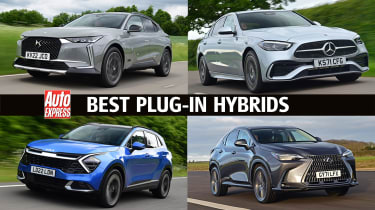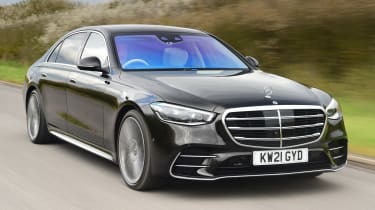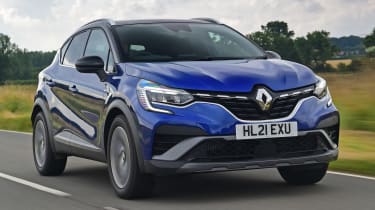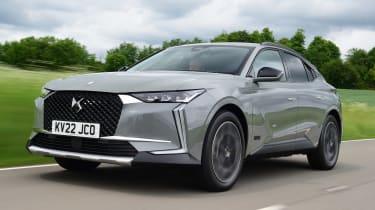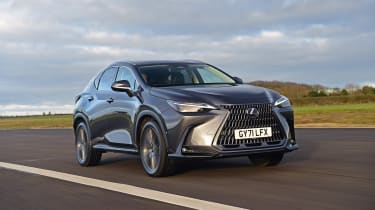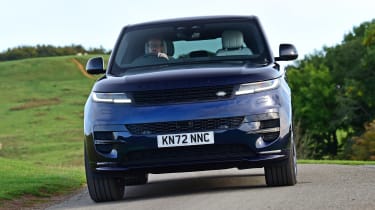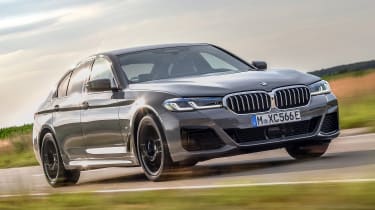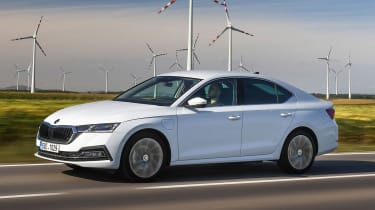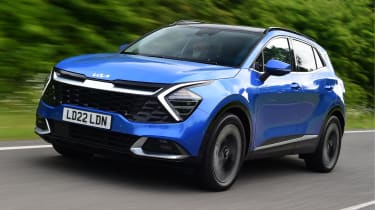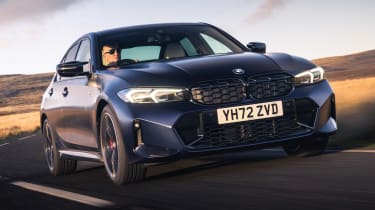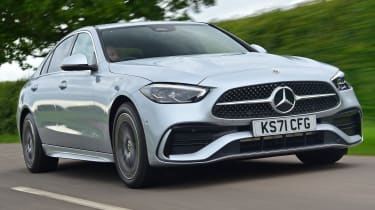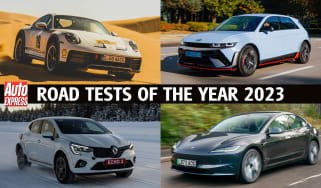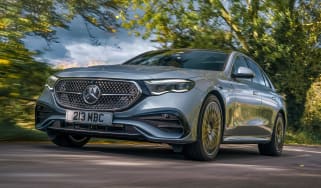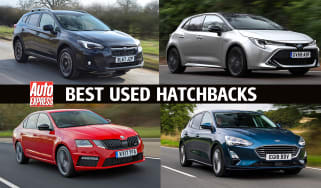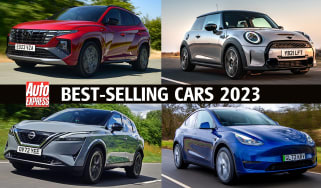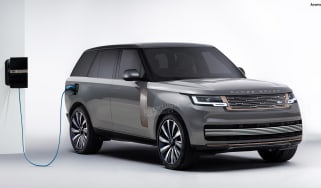Top 10 best plug-in hybrids to buy
The plug-in hybrid market has grown exponentially in recent years. Here are our electrified favourites
Not everyone is ready to take the plunge with a fully electric vehicle, which makes plug-in hybrids (PHEV) a great ‘stepping stone’ as they combine both internal combustion and electric power. On this page we aim to help by explaining the market and delivering our verdicts on the best plug-in hybrids you can buy.
With many manufacturers joining the PHEV arms race, choosing the best plug-in hybrid is even more difficult as there’s a huge array of models to choose from – from small, cheaper options to large family hatchbacks and even luxury SUVs and estates, there’s probably a plug-in hybrid out there to suit your lifestyle.
Plug-in hybrids work in the same way as regular hybrids, but the batteries are charged by plugging the car into a domestic three-pin plug, a home EV wallbox or a public rapid charger when it needs to be topped up. When the batteries have depleted or you reach a certain speed, a petrol or diesel internal combustion engine will take over, as they would in a conventional hybrid, so you can still continue your journey until you are able to recharge the car.
Fitted with larger battery packs, plug-in hybrids can run on pure electric power for longer than conventional hybrid cars – with some models offering over 50 miles of range, although most will cover 20-30 miles using the battery alone. This makes them ideal for drivers who cover lower miles or spend the majority of their time in cities and urban environments.
Whether you’re looking to lower your carbon footprint, take advantage of government incentives, lower tax rates, or just prefer the drive of a plug-in hybrid car, there are loads of benefits if you are looking to make the switch from internal-combustion-engined cars to a hybrid.
So which PHEVs do we recommend? Blow is our list of the top 10 best options, just scroll down to see our favourites in descending order.
Best plug-in hybrid cars
10. Mercedes S 580e
The S-Class may no longer be the pinnacle of Mercedes luxuriousness, a title handed to the all-electric EQS, but the S-Class is sleek, quick and retains much of its traditional appeal – a refined and technology-laden conveyance for affluent and successful individuals.
The plug-in hybrid S 580e comes with a 3.0-litre inline six-cylinder petrol engine tied to a 148bhp electric motor, producing a combined 510bhp. The 28.6kWh battery pack gives you 62 miles of pure electric range, which can be charged from 0-80 per cent in 20 minutes from a DC rapid charger, making the S-Class an extremely quick but sophisticated machine. Official figures state the car emits just 18g/km of CO2 and can deliver up to 353.1mpg.
On the road, the S-Class is impressively poised and responsive to steering inputs, making it easy to place the long bonnet in the corners, and even on especially challenging twisty or bumpy roads, there’s little in the way of body roll or discomfort.
9. Renault Captur E-Tech PHEV
The Captur is one of our favourite small SUVs, thanks to its handsome looks, well-designed interior and plenty of space. In fact, despite being based on the Renault Clio, the Captur can seat four adults in comfort, with a clever sliding bench that can adjust boot space. If you can compromise slightly on knee room, boot space is among the best in class.

The E-Tech Plug-in is powered by a 1.6-litre petrol engine and two electric motors, fed by a 9.8kWh battery. A combined 158bhp makes it the most potent Captur available, and official testing shows it can drive for up to 31 miles without the petrol engine chiming in. It's worth noting, however, that during our test in winter we could manage only 19 miles before a top-up.
That doesn't affect its low 34g/km CO2 figure, which makes this Captur a lot cheaper for business users to run than the petrol or diesel version. VED (road tax) is also at a slightly reduced rate, and with fuel consumption of up to 188.3mpg, trips to the filling station should be a lot less frequent.
The car comes with a free set of charging cables, and as with all Renault models there’s a five-year warranty, as well as eight-year cover for the battery.
8. DS 4 E-Tense 225
One of our biggest twin test shocks of recent times happened when a DS 4 E-Tense 225 beat Audi’s A3 TFSI e. While strong discounts for the DS counted in its favour, a big factor in its victory was its better-resolved plug-in hybrid powertrain.
That setup combines a 1.6-litre inline-four engine with a 12.4kWh battery pack with a 107bhp motor to give an electric-only range of up to 33.5 miles. The total system power is 222bhp, which gives strong performance – the DS 4 225 will go from 0-62mph in 7.7 seconds, on to a top speed of 145mph.
The DS 4 is also comfortable, stylish, has an interesting cabin design, and offers a nice alternative to its more conventional rivals. It’s taken a while, but finally, Citroen’s offshoot is finally starting to find its groove.
7. Lexus NX 450h+
This plug-in hybrid version of the NX is mechanically very similar to the Toyota RAV4 PHEV, sharing its 2.5-litre four-cylinder petrol engine, two motors and 18.1kWh battery pack. However, the Lexus is worth the premium, partly thanks to its wonderful interior.
The cabin offers a very different, arguably more classy space than German rivals, and the new infotainment setup is a big step forward from the arrangement that came before with its awkward-to-use trackpad controller. It’s a smart-looking car from the outside, too.
The engine, motors and battery come together to produce a punchy 305bhp, which is enough to whisk the NX from 0-62mph in just 6.3 seconds. Meanwhile, an electric-only range of up to 40 miles allows the SUV to slip into the eight per cent Benefit-in-Kind tax bracket. And once the battery is empty, the NX tends to be much more economical than many comparable PHEVs run the same way.
6. Range Rover Sport P440e
It’d be tempting to put the plug-in hybrid version of the sensational new Range Rover Sport on this list, but its Range Rover Sport sibling is very nearly as luxurious while also being cheaper and slightly sharper to drive.
As is the case for the full-fat Rangie PHEV, the plug-in Range Rover Sport pairs a 3.0-litre in-line six petrol engine with a whopping 38.2kWh (31.8kWh useable) battery pack. This gives an impressive theoretical electric-only range of up to 70 miles according to lab results, although we’d expect more like 50 miles in real-world conditions.
The PHEV can be specced in two states of tune – the P510 is good for 503bhp and 700Nm of torque, making for a 0-62mph time of 5.4 seconds, while the P440e makes do with a still healthy 434bhp which provides a 5.8-second 0-62mph figure. Be warned, though, while less expensive than a ‘proper’ Range Rover, this is far from a cheap car. Even the less powerful P440e starts at nearly £100,000, and most will be well beyond that mark once options are chosen.
5. BMW 545e xDrive
BMW already had a PHEV version of its excellent 5 Series, badged 530e, but the arrival of a six-cylinder petrol engine in its 545e xDrive plug-in makes for an even more impressive machine. Not only is it more powerful – with a combined 387bhp and 600Nm of torque – but the silky-smooth 3.0-litre petrol also makes the transition between electric and internal-combustion power seamless.
The 11.6kWh battery is a lot smaller than the C 300 e offers, but it's still enough to get the BMW 33 miles on electric power. It also boosts its fuel-efficiency figure to 166mpg and, critically for the executive class, cuts CO2 emissions to around 40g/km.
One advantage of a smaller battery is the weight saving, because unlike a lot of PHEVs, the 545e xDrive is still an impressive car from behind the wheel. It feels like a balanced, agile saloon, with carefully tuned damping to ensure excellent body control without an overly firm ride. There's even a tuneful growl from the engine under acceleration.
4. Skoda Octavia iV
With more space than rivals, lots of thoughtful features and a comfortable interior, the Skoda Octavia is one of our favourite cars. For the first time, this generation is also available with plug-in power, courtesy of a powertrain familiar to Volkswagen Golf GTE owners.
A 1.4-litre turbo petrol engine and small electric motor team up to produce 201bhp and 350Nm of torque. It's enough for a respectable 0-62mph time of 7.8 seconds, but the Octavia iV's 34-mile EV range is the more important figure. This means the Skoda can slip four adults and all their luggage in and out of the city with virtually no tailpipe emissions.
Official figures are 282mpg and 22-33g/km of CO2, which are sure to appeal to company-car drivers on the hunt for low Benefit-in-Kind liability. Bills are around half those of an equivalent Octavia with a 1.5-litre petrol engine.
When we last tested the car, we found 30 miles is easy to achieve in all but freezing weather, and recharging the battery takes just over three hours using a wallbox. That should make it easy for most owners to start the day with a full EV range, or even top-up at work for the drive home.
3. Kia Sportage PHEV
There was a time when spending more than £40,000 on a Kia would have seemed ludicrous, but the Sportage PHEV truly justifies its cost with great refinement, a strong tech offering and even some style. And in any case, for company car choosers, the electrified Sportage will prove a very affordable option, with its 43-mile electric-only range and 25g/km CO2 figure sneaking it into the eight-per-cent Benefit-in-Kind tax band, something the closely related Hyundai Tuscon PHEV hasn’t managed.
An electric motor, a 13.8kWh battery pack and a 1.6-litre inline-four petrol engine blend well to give decent, if not hugely brisk straightline performance, with a 261bhp output getting the relatively heavy Sportage from 0-62mph in 8.2 seconds.
As with all versions of the Sportage, the interior is one of the car’s real highlights. Two 12.3-inch displays – one housing the excellent infotainment system, the other a digital instrument cluster – are placed side-by-side to give the impression of a single unit, while the material quality is excellent.
2. BMW 330e
Since the BMW 3 Series is already a top choice among families and company car drivers, a plug-in hybrid version was always going to be a logical step. BMW intended to launch the current-generation car as a plug-in from the start, so the platform was developed with the powertrain in mind.
As a result, there’s little impact on passenger space, but boot capacity does shrink to 375 litres compared with the standard saloon’s 480 litres. If you need more space, it’s worth noting that, unlike the previous generation, the 330e is now also available in Touring estate guise for the first time. Plus, a recent facelift means the 330e is better than ever, even if it’s a little annoying to see the climate controls migrate to the new touchscreen infotainment system.
As has been the case throughout the current-gen version’s life, key to the BMW’s appeal is its excellent chassis. Sure, the PHEV powertrain adds extra weight, but the 3 Series still handles well and the ride is supple.
Company car buyers will enjoy low running costs, thanks to 37g/km emissions. BMW claims 36 miles is possible on electricity alone, and It takes five and a half hours to charge from a three-pin socket.
1. Mercedes C 300 e
The Mercedes C-Class is a great executive saloon that majors on comfort, refinement and sophistication. It might not be quite as sporty as some rivals such as the BMW 3 Series and Jaguar XE, but it feels more special inside. That's especially true for the PHEV, which is serene while being powered along by its 127bhp electric motor.
And to answer the naysayers who think plug-in hybrids don't go far enough on a charge, Mercedes has fitted a 25.4kWh battery – that's larger than the one in the original Nissan Leaf. It's enough juice to give the C 300 e an official EV range of more than 60 miles, making 40-50 miles of zero-emissions driving realistic in most conditions. Crucially, that's not only more than enough for most people's daily driving, but it can also take a good bite out of longer trips as well.
The electric motor is paired with a 2.0-litre four-cylinder petrol engine, offering 201bhp, for a combined total of 308bhp. It's reasonably brisk, getting from 0-62mph in 6.1 seconds, but the C 300 e only really feels sporty in a straight line. The engine is quiet when it kicks in though, and easily drowned out by the Burmester hi-fi.
One of the downsides of the Mercedes is its price tag. Before you spec any options or packs, a C 300 e will already set you back more than £50,000.
Best plug-in hybrid cars
- Mercedes C 300 e
- BMW 330e
- Kia Sportage PHEV
- Skoda Octavia iV
- BMW 545e xDrive
- Range Rover P440e
- Lexus NX 450h+
- DE 4 E-Tense 225
- Renault Captur E-Tech PHEV
- Mercedes S 580e
Should you buy a plug-in hybrid?
Plug-in hybrids are proving popular for a number of reasons. As technology improves and more manufacturers are offering plug-in hybrids as part of car lineups, the price you pay for a plug-in vehicle is gradually coming down. Then there are the tax implications, with many plug-ins offering lower VED road tax rates than their combustion counterparts. Benefit-in-Kind rates for company car users are also lower, thanks to low emissions.
A close second to the low running costs is the fact that this hybrid kit doesn't require you to compromise on the way you use your car. The key is to remember to plug the car into a charging point wherever possible to maximise the amount of electric running you do, but if you can’t charge the car just reverts to its internal-combustion engine. If you think of your car like a smartphone, and get into the habit of plugging it in overnight to charge, then you'll soon see the lower costs that electric driving can bring. However, failing to keep the battery charged will likely see economy drop to potentially worse levels than an equivalent non-hybrid model.
If you’re thinking of making the switch to electric, read our list of the best electric cars to buy.

